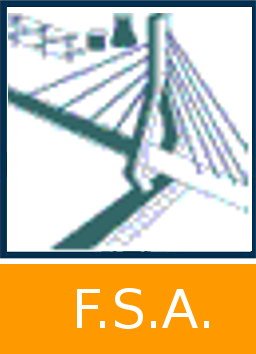Master thesis and internship[BR]- Master's thesis : Design and optimization of a lifting device for aircraft fuselage manufacturing[BR]- Integration Internship : CTI Systems
Vestraete, Robin 
Promotor(s) :
Béchet, Eric 
Date of defense : 26-Jun-2023/27-Jun-2023 • Permalink : http://hdl.handle.net/2268.2/17795
Details
| Title : | Master thesis and internship[BR]- Master's thesis : Design and optimization of a lifting device for aircraft fuselage manufacturing[BR]- Integration Internship : CTI Systems |
| Translated title : | [fr] Conception et optimisation d’un dispositif de levage pour la fabrication de fuselage d’avion |
| Author : | Vestraete, Robin 
|
| Date of defense : | 26-Jun-2023/27-Jun-2023 |
| Advisor(s) : | Béchet, Eric 
|
| Committee's member(s) : | Bruls, Olivier 
Noels, Ludovic 
Paulus, Charles |
| Language : | English |
| Keywords : | [en] Structural design [en] Aircraft manufacturing [en] Truss structures [en] Topology optimization |
| Discipline(s) : | Engineering, computing & technology > Multidisciplinary, general & others |
| Institution(s) : | Université de Liège, Liège, Belgique |
| Degree: | Master en ingénieur civil en aérospatiale, à finalité spécialisée en "aerospace engineering" |
| Faculty: | Master thesis of the Faculté des Sciences appliquées |
Abstract
[en] The design of lifting devices plays a crucial role in the efficient and safe manufacturing of aircraft fuselage. The geometry and materials used for aircraft fuselage parts require robust lifting mechanisms to ensure the structural integrity of the components.
The present thesis aims to design and modify a lifting device with efficient use of materials under technical and standard requirements. A review of the performances for different load cases of the existing operational lattice structure is first done using morphological indicators and justifying the choices of significant elements. The design is followed by integrating a new feature to meet the requirements of the overhead crane in the new hangar. The local effects of the new feature are determined, and members are added conveniently to limit the structure dimensions and loads in members and connections. The structural integrity of the new design is ensured by a detailed analysis of the sub-components while respecting standards requirements.
A structural optimization approach brings a new perspective to the structure's design. Despite the extensive use of this tool in research, its practical implementation is limited due to the high manufacturing costs associated with complex optimized structures. This work uses the ground structure approach to truss topology optimization with a gradient-based optimizer and the interior-point algorithm. The optimization formulations use a regularized Heaviside step function to consider the cost of element placement with an adapted procedure for the multiple load cases. New designs are generated using the minimum cost and compliance formulations with stress constraints and members' areas as objective function. The resultant structures prove their efficiency but are still limited by the post-process for their actual implementation.
File(s)
Document(s)

 Thesis_Vestraete_Robin.pdf
Thesis_Vestraete_Robin.pdf
Description: -
Size: 20.33 MB
Format: Adobe PDF
Cite this master thesis
The University of Liège does not guarantee the scientific quality of these students' works or the accuracy of all the information they contain.


 Master Thesis Online
Master Thesis Online




